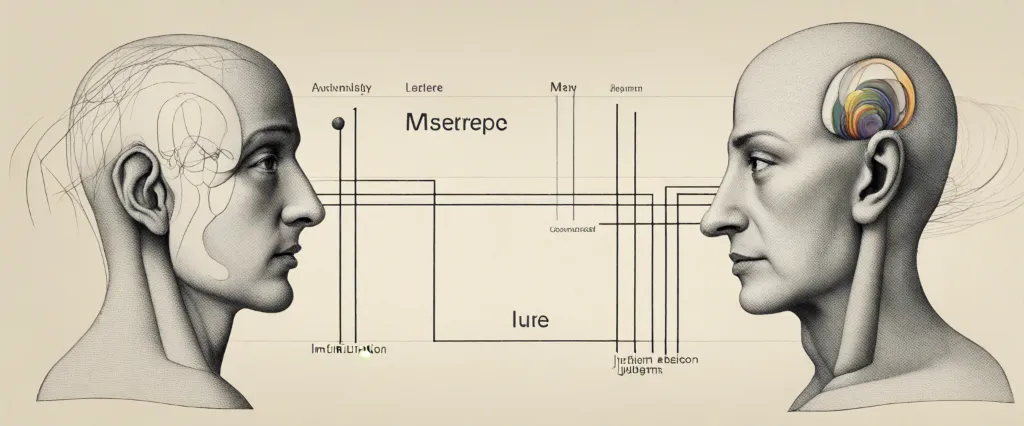——How the Mind Works by Steven Pinker & The Molecule Of More by Daniel Z. Lieberman

In the realm of understanding the human mind and its intricate workings, two notable books stand out as thought-provoking and insightful contributions to the field: “How the Mind Works” by Steven Pinker and “The Molecule Of More” by Daniel Z. Lieberman. As researchers and experts in their respective domains, Pinker and Lieberman delve deep into the realm of human cognition, exploring the underlying mechanisms that shape our experiences, behaviors, and decision-making processes. While both authors offer unique perspectives and tackle distinct aspects of the mind, a comparative study of their works unveils fascinating parallels and divergences, shedding new light on the nature of human consciousness, motivation, and fulfillment.
Pinker’s “How the Mind Works” serves as a comprehensive exploration of the mind’s intricacies, drawing on various fields such as evolutionary biology, psychology, and neuroscience. With precision and clarity, Pinker endeavors to unravel the mysteries that have baffled humans for centuries, seeking to decipher how our minds have evolved through natural selection to navigate our complex world. Through a series of engaging anecdotes, empirical studies, and evolutionary analysis, Pinker examines diverse cognitive phenomena such as perception, language acquisition, emotion, and decision-making. His book not only provides a meticulous examination of these intricate mental processes but also offers readers a glimpse into the evolutionary foundations that underpin human cognition, bridging the gap between biology and psychology.
On the other hand, Lieberman’s “The Molecule Of More” delves into a distinct aspect of human psychology: the impact of neurotransmitters on our behavior, decision-making, and pursuit of happiness. Building upon the foundational understanding of dopamine, a key neurotransmitter associated with motivation and reward, Lieberman takes readers on an enlightening journey exploring the intricate interplay between neurobiology and human ambition. Drawing upon a myriad of real-life examples, ranging from creative pursuits to addiction and mental illness, Lieberman elucidates how the presence or absence of certain neurotransmitters can either propel us towards achieving our desires or hinder our ability to find satisfaction. By blending the scientific with the personal, Lieberman provides a compelling narrative that reflects on the implications of our neurochemical makeup, prompting readers to question their own perspectives on ambition, fulfillment, and the pursuit of happiness.
While Pinker’s work focuses on unraveling the evolutionary origins and mechanisms of the mind, Lieberman’s approach zeroes in on the neurobiological aspects that drive human behavior. Yet, a careful examination of their works reveals intriguing parallels. Both authors delve into the underlying forces that shape human nature, offering insights into the complex tapestry of our cognitive processes. As we embark on this comparative study of Pinker’s “How the Mind Works” and Lieberman’s “The Molecule Of More,” we will explore the intersection and divergence of evolutionary biology, psychology, and neurobiology, unearthing fresh perspectives on the driving forces behind our thoughts, actions, and the pursuit of greater personal fulfillment.
Brief Summary of Two Books
How the Mind Works by Steven Pinker
“How the Mind Works” by Steven Pinker is a comprehensive exploration of human cognition and its evolution. Pinker delves into various aspects of the human mind, including perception, memory, emotions, language, and social relationships. He emphasizes that the mind is essentially a product of evolution, shaped by natural selection.
Pinker argues against the popular notion of the mind as a blank slate, proposing that instead, our brains possess innate mental modules dedicated to processing specific information. He elaborates on how these modules enable us to see, hear, and interpret the world around us, as well as navigate our social interactions.
The book also tackles the mysteries of consciousness and free will, investigating their origins and how they might be understood in light of evolutionary biology. Pinker provides thought-provoking explanations for various cognitive phenomena, debunking misconceptions and shedding light on perplexing questions such as why we dream, why we experience emotions, and how we acquire language.
Throughout “How the Mind Works,” Pinker incorporates multiple disciplines such as neuroscience, evolutionary biology, psychology, and linguistics to build a compelling argument about the origins and functions of the human mind. He blends scientific research, real-life examples, and engaging anecdotes to make complex concepts more accessible to general readers.
By the end of the book, readers gain a deeper understanding of the mechanisms behind human cognition and a greater appreciation for the marvels of the mind. Pinker’s work challenges traditional assumptions about the mind and offers a fascinating exploration of our mental faculties through an evolutionary lens.
The Molecule Of More by Daniel Z. Lieberman
“The Molecule of More: How a Single Chemical in Your Brain Drives Love, Sex, and Creativity – and Will Determine the Fate of the Human Race” by Daniel Z. Lieberman explores the role of dopamine in human behavior and its impact on various aspects of our lives. The book delves into the science of dopamine and its influence on desire, motivation, and pleasure. The author explains how this neurotransmitter affects our relationships, decision-making, and creative pursuits. By exploring case studies and scientific research, Lieberman argues that understanding and managing our dopamine-driven behaviors can lead to a more fulfilled and successful life. Ultimately, the book sheds light on the complex interplay between brain chemistry and human behavior, offering insights into how dopamine shapes our lives and the potential implications it might have for the future of humanity.
Comparison between Two Books

Similarities in Mysteries Of Our Body
There are some similarities between the books “How the Mind Works” by Steven Pinker and “The Molecule Of More” by Daniel Z. Lieberman regarding the exploration of mysteries of our body. Although these books tackle different subjects, they both delve into explaining the intricate workings of our bodies and unraveling the complexities behind human behavior.
1. In-depth analysis: Both books undertake a deep exploration of the human body and mind. Steven Pinker examines the cognitive processes of the brain, addressing how different mental abilities have evolved and how they function in society. Similarly, Daniel Z. Lieberman focuses on the role of dopamine and its impact on human motivation and behavior.
2. Interdisciplinary perspective: Both authors bring together knowledge from various scientific disciplines to provide a comprehensive understanding of the mysteries they explore. Pinker, being a cognitive scientist, draws on evolutionary biology, genetics, and linguistics, among other fields. Meanwhile, Lieberman, a psychiatrist, incorporates neuroscience, psychology, and physiology into his explanations of dopamine’s role.
3. Science-based approach: Pinker and Lieberman both base their explanations on scientific research and empirical evidence. They rely on studies, experiments, and theories within their respective fields to support their claims and present the reader with a factual understanding of the subjects at hand.
4. Accessibility for a general audience: Despite the complexity of their subjects, both authors make an effort to present the information in a manner that is accessible to a general audience. They avoid excessive jargon and use relatable examples to help readers grasp the concepts being discussed.
In summary, while “How the Mind Works” and “The Molecule Of More” focus on different aspects of our bodies and minds, they share similarities in terms of their in-depth analysis, interdisciplinary perspective, science-based approach, and accessibility for a general audience. Both books seek to unravel the mysteries of our body and mind, providing readers with a deeper understanding of ourselves.
Divergences in Mysteries Of Our Body
In comparing How the Mind Works by Steven Pinker and The Molecule of More by Daniel Z. Lieberman, it is important to note that these two books delve into different aspects of human existence. While Pinker’s book explores the processes and mechanisms of the human mind, Lieberman focuses on the role of dopamine in motivation and craving. However, both authors shed light on the mysteries of our body in their respective works.
In How the Mind Works, Pinker investigates the nature of human cognition and attempts to unravel the intricacies of the mind. He explores diverse topics such as perception, language, emotions, and decision-making processes. Pinker aims to provide a comprehensive understanding of how our mind works, drawing from various fields including psychology, neuroscience, and evolutionary biology. He emphasizes the importance of evolutionary theory in explaining the function and evolution of the mind.
On the other hand, The Molecule of More by Lieberman explores the impact of dopamine on our motivation, desires, and overall behavior. He delves into the intricate ways in which dopamine interacts within the brain, leading to both positive and negative effects. Lieberman argues that while dopamine serves as the engine of human progress and achievement, it can also be responsible for destructive behaviors such as addiction and excessive craving.
In terms of the divergence in their perspectives on the mysteries of our body, Pinker and Lieberman differ in their emphasis. Pinker’s focus lies more in understanding the underlying processes that govern the mind, striving to answer questions about cognition and human nature. He aims to unravel the mysteries of the mind’s operations, shedding light on how and why humans think and behave in the ways that they do.
On the other hand, Lieberman’s emphasis in The Molecule of More is primarily centered around dopamine and its influence on our physical and mental states. While Pinker addresses the mind as a whole, Lieberman’s focus is narrower, specifically exploring the role of this neurotransmitter in driving motivation and desire. By doing so, he offers insights into the complexities of human behavior, explaining why we are motivated to pursue certain goals and why we occasionally experience uncontrollable cravings.
In summary, while both Steven Pinker’s How the Mind Works and Daniel Z. Lieberman’s The Molecule of More tackle various mysteries of our body, they focus on different aspects. Pinker’s book presents a broader exploration of the mind’s functions and the underlying processes that shape human cognition, while Lieberman’s work delves deeply into the role of dopamine in motivation and craving. Both perspectives contribute to our understanding of the mysteries of our body, offering intriguing insights into different facets of human existence.

Conclusion
Both “How the Mind Works” by Steven Pinker and “The Molecule Of More” by Daniel Z. Lieberman are highly regarded books in their respective fields. The decision of which book is more worthy of reading depends on your personal interests and what you are looking to gain from reading.
“How the Mind Works” delves into the field of cognitive science and explores how the human mind processes information, how it evolved, and why certain cognitive processes exist. It offers insights into human behavior, emotions, and the complexities of the mind. If you are interested in understanding the intricacies of the human mind and enjoy exploring topics related to neuroscience and psychology, this book would be a great choice.
On the other hand, “The Molecule Of More” focuses on dopamine, a neurotransmitter associated with motivation and pleasure, and its impact on human behavior. The book explores how the pursuit of certain experiences, such as love, money, and success, is influenced by dopamine’s effects on our brain chemistry. If you are curious about the underlying neurological and biological factors that drive our motivations and decision-making processes, this book provides intriguing insights.
Ultimately, the choice between the two books depends on your specific interests. If you lean more towards the scientific understanding of the human mind and cognition, “How the Mind Works” by Steven Pinker would be a recommended pick. However, if you are interested in exploring the impact of dopamine and its influence on motivation and behavior, “The Molecule Of More” by Daniel Z. Lieberman would be a valuable read.

